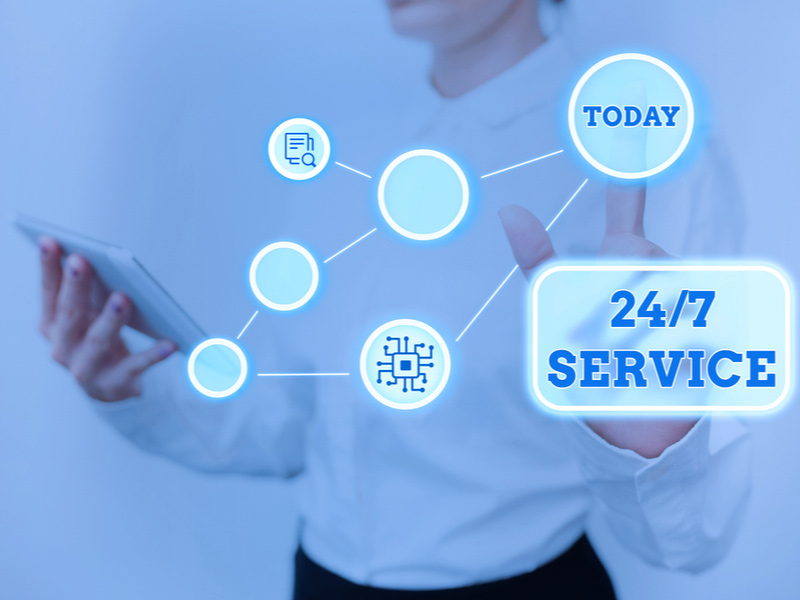We all get mad. Boy, do we get mad. We all have our triggers. Someone cuts us off in traffic. We’re given the wrong order. Cable goes out right in the middle of our favorite show. We can get angry (often irrationally) over just about anything.
But then there’s the thing that seems to push everyone’s buttons and send us over the edge: poor customer service! Some days, it seems to be everywhere. We stew, we fry, we write bad reviews, we tell anyone who will listen. When it comes to poor customer service, it’s definitely a mad, mad, mad world.
Contact centers to the rescue?
OK, so contact centers probably can’t save the world. But every contact center, large and small, has the power to take the anger quotient down a few notches for every mad or frustrated customer—and to turn them into brand loyalists. Maybe even make them happy.
That almost-magical power is first contact resolution or FCR. FCR is the measure of customer issue contacts that are resolved on the first try. Although FCR meant first call resolution in the past, it now encompasses customers’ increasing use of digital channels and social media—not just phone—for problem resolution.
FCR is such a transformative tool that research firm Frost and Sullivan call it the “home run” of contact center metrics. Why? It’s the only performance metric, F&S says, that “has an effect on almost every other meaningful statistic and measurement in the call center.”
FCR is considered essential by contact center professionals, too, because of its strong links to customer satisfaction, service efficiency, and service costs. With FCR, you gain valuable insight into how customers perceive your organization. You can see whether you are resolving concerns or causing unwanted frustrations. FCR also affects other critical call center metrics: Improvements in FCR have proven correlations to gains in operational costs, churn, and sales.
The key question is this: Are contact centers making maximum use of their FCR superpowers?
Why so mad, punky?
To understand the power of FCR, first consider the mechanics of customer satisfaction: the whys behind customers’ anger and the hows of converting mad customers to happy ones—not to mention the high cost of just letting customers simmer. This is so important to businesses across the board that there’s an actual rage study. Seriously. The independent 2020 National Customer Rage Study of corporate complaint handling in America was conducted by Customer Care Measurement and Consulting (CCMC) in collaboration with the Center for Services Leadership at the W.P.Carey School of Business, the University of Arizona, and KraftHeinz. Rage isn’t new, by the way: This is the ninth wave of the study – the original was conducted for the White House in 1976.
The findings confirm in black and white what we know more or less intuitively—and then some. Key takeaways from the most recent study say that nearly two-thirds of customers with a problem experience rage and that they rage when they feel they’re wasting time complaining. Those who complain expect very little—but actually, get even less! In fact, while 55% expect a company to respond to a complaint posted on social media, almost half never get a response at all! Satisfactory complaint handling correlates even more strongly than ever with high levels of brand loyalty, while mediocre complaint handling continues to cost businesses billions.
Where’s the disconnect?
If customers have issues that need to be addressed and companies have the means to resolve them, why is there still such a disconnect? Beneath the surface of the problem-solution equation, it’s more complicated and nuanced. Some brands fear angry customers, causing them to avoid taking the necessary steps for a sustained problem resolution process. Others dismiss complaining customers as cranks or nuisances and may take only the most cursory actions to gauge customer satisfaction. Still, others have lost sight of the long game, that there are incredible opportunities for the brand to benefit from frustrated or even angry customers—and boost understanding, satisfaction, loyalty, and revenue.
What do these customers want from us anyway? companies may ask themselves. According to Psychology Today, customers want one thing more than anything else from the brands they do business with (and frequently don’t get it): respect—for their time, their dignity, their intelligence. In fact, PT says, lack of respect is the #1 reason for customer dissatisfaction and attrition, when it should be the very cornerstone of customer service.
FCR demonstrates R-E-S-P-E-C-T
Now we’re getting to the heart of why first contact resolution is such a powerful tool: it demonstrates to the customers that you hear them and take their issues seriously. FCR acknowledges that they’ve been inconvenienced (at the least) and that the company has made it a priority to solve issues in a speedy, efficient way. When agents convey these ideas to customers—implicitly as well as explicitly, even before and during the resolution process—they are showing customers respect for them and calming even the most frustrated.
The importance of FCR to customers is near-universal: In fact, the lack of FCR nearly always turns up on lists of reasons for customer dissatisfaction. Reasons for dissatisfaction can be anything, but the familiar repeat offenders—often the simplest and most obvious—tend to continue to appear on the list after list:
- Long wait on hold
- An unavailable or out-of-stock product
- Repeating the customer’s problem
- Uninterested service rep
- Poor product/service
- No first call resolution
- Lack of follow up
Without FCR processes in place, frustration can quickly grow way out of proportion to the original problem. With every contact attempt in pursuit of a solution comes more friction. With more friction comes more frustration. And with enough frustration, many customers can get to rage (See above.) FCR helps ensure that your customers never get to that point.
Technology: central to FCR
Look behind impressive or improved FCR stats, and you’ll find hard-working contact center technology that provides omnichannel choices for customers; streamlines operations; gives customers the ability to ‘self-solve;’ and enables agents to focus on problem-solving by removing tedious, repetitious tasks and enabling them to access the information they need to respond to the customer. Organizations frequently report improvements in FCR after moving to the CXone cloud contact center platform.
Case in point: the Signify lighting company, which significantly increased its rate of same-day resolution, according to its CXone implementation partner, Webhelp. Integrating Signify’s CRM with CXone using CXone APIs automated the process of logging in interactions, which enabled the company to respond to customer emails the same day. The integration also streamlined the contact center’s ability to resolve issues: End-to-end support time, from opening a ticket to resolution, decreased by 70%, and same-day resolution increased by 13%.
Another example is LPL Financial, a firm that helps financial advisors grow their businesses.
The company says that the CXone IVR’s skills-based routing reduced call transfer rates by 25%, which also helped increase FCR by 10%. Most importantly, LPL’s customers noticed the improvements: Satisfaction scores soared to 9.4 on a 10-point scale.
Self-service: increasingly important to FCR
Customer experience guru Shep Hyken’s advice to companies is to "reduce friction and be easy". Smooth problem resolution is a big piece of whether brands are perceived as ‘easy to do business with’ and how much friction, or obstacles, customers expect to encounter in that process. Choice and empowerment figure prominently in the equation.
Self-service delivers both choice and empowerment, especially in terms of FCR. Many customers will—and prefer to—resolve an issue on their own. Self-service, through the website or IVR, enables them to do this, quickly and easily.
Once a tool whose main purpose was reducing customer-agent contact, self-service is now its own channel that can empower customers and agents alike. NICE CXone 2020 benchmark research found that for the first time, self-service channels have higher rates of FCR (62%) than agent-assisted FCR (55%).
Automation and AI are also playing an increasing role in self-service resolution and FCR. Customers can get answers in record time. And even in agent-assisted resolution, AI can be assisting agents behind the scenes.
One self-service caveat: Always have a seamless path for customers to get to a live agent. They may not find what they’re looking for, get stuck in the process, or change their minds. Regardless, being able to easily toggle to an agent keeps the transaction in FCR territory and eliminates the need for the customer to make another contact and start over. Which all serves to keep customers off the rage scale.
Making the most of FCR
Customers expect resolution on the first contact, plain and simple. Whenever it’s possible, FCR is the gold standard. But when it’s not, a timely follow-up with the customer will please him or her just as much—and maybe even pleasantly surprise them. In the meantime, brands can optimize FCR as the customer experience powerhouse it is by making problem resolution a multi-pronged system of strategies, technologies, and agents:
- Make it a priority in your organization.
- Make sure it reflects customer demand and usage. Incorporate the digital channels customers use and expect—everything from ‘old-school’ email to chat to web forms, social media, and private messaging apps.
- Eliminate all sources of customer friction!
- Incorporate self-service.
- Optimize AI and bots but always give the customer an easy path to an agent.
- Provide agents the training and tools for efficient research and follow-up when FCR isn’t possible.
- Make FCR a priority metric—and also tie it to other key metrics, like CSAT.
- Involve and invest your whole team—and organization—in your FCR efforts and success.
CXone can help boost FCR rates—and CSAT—in your contact center, too. Click here to learn more.






